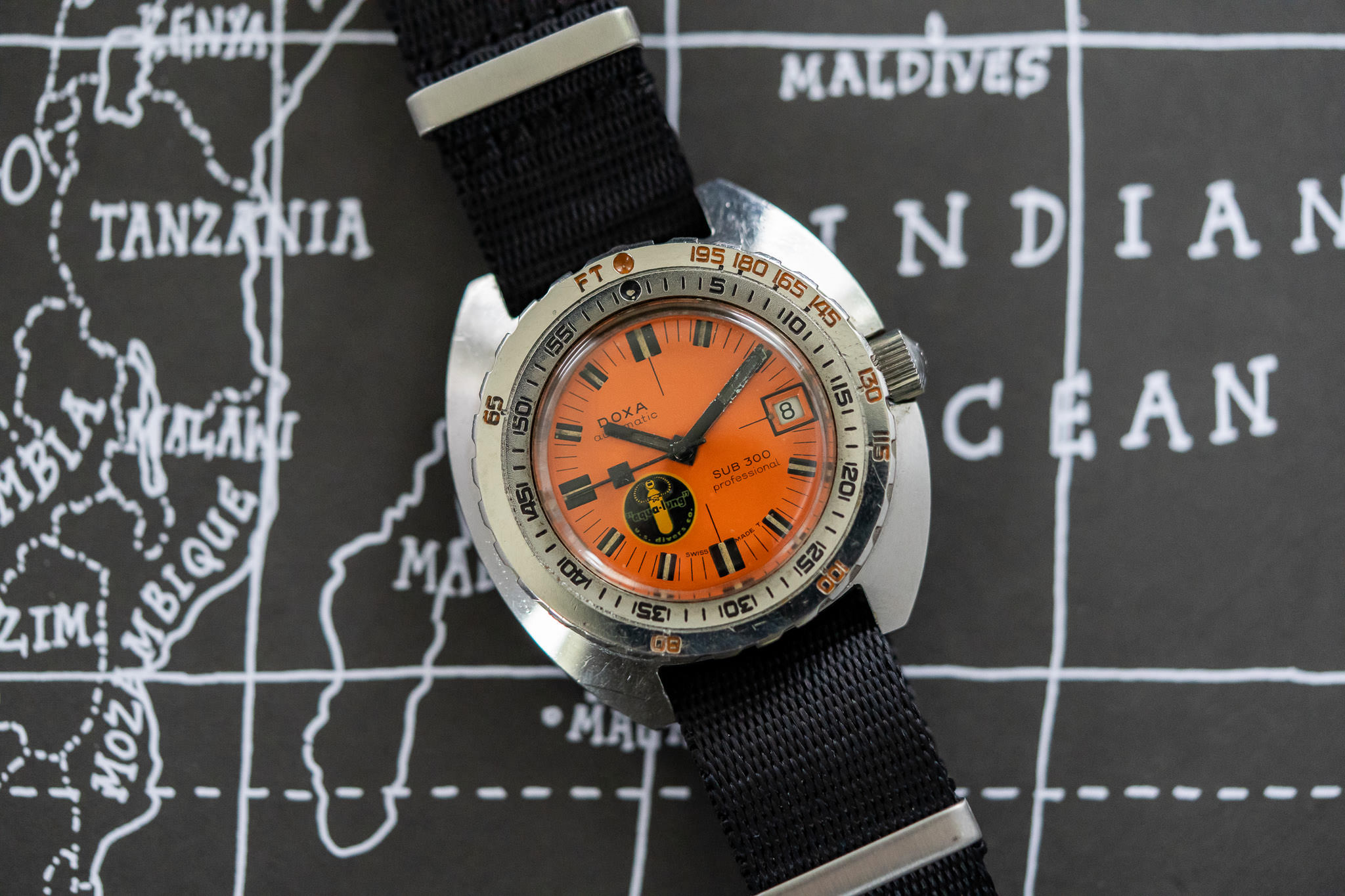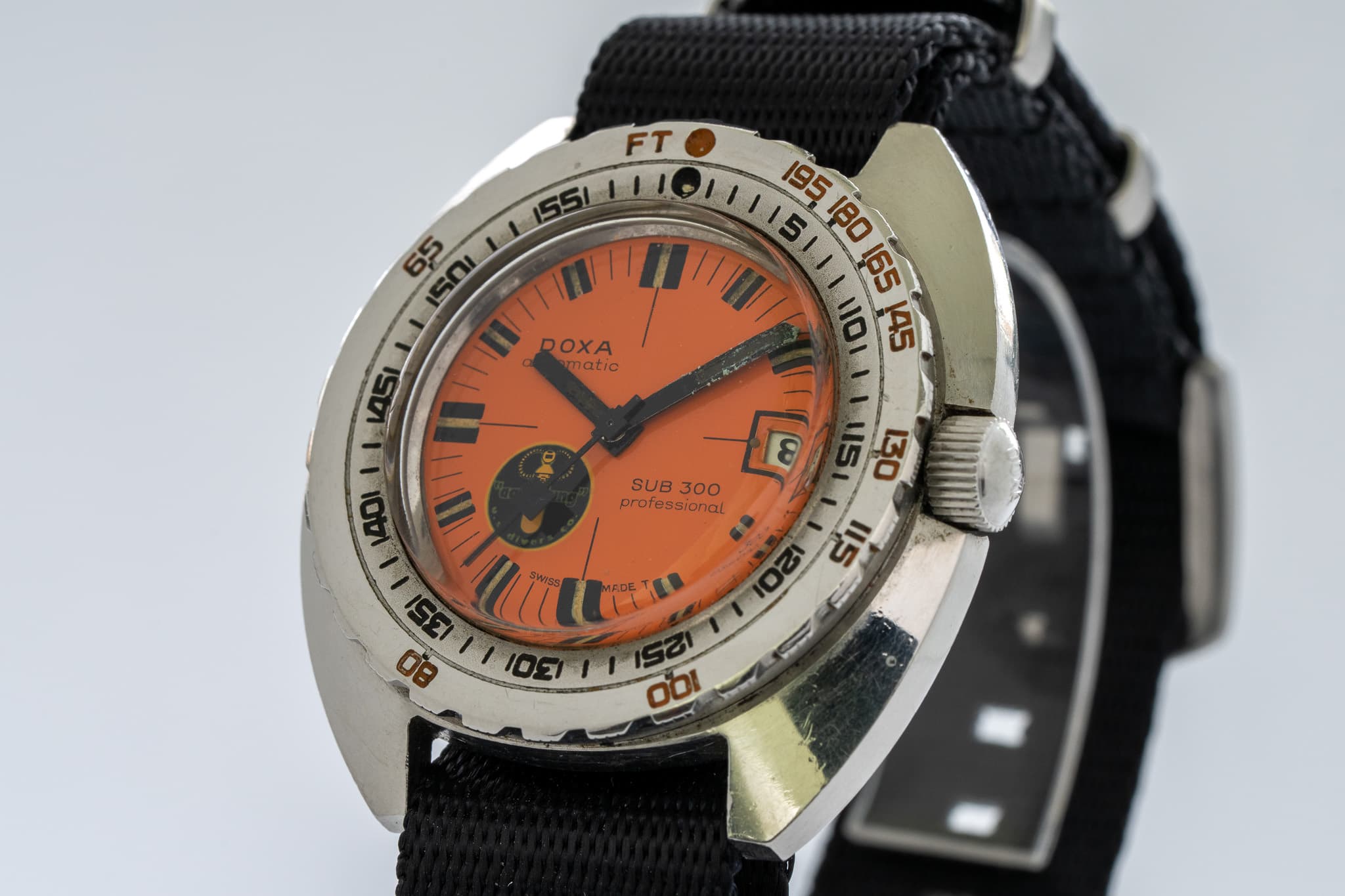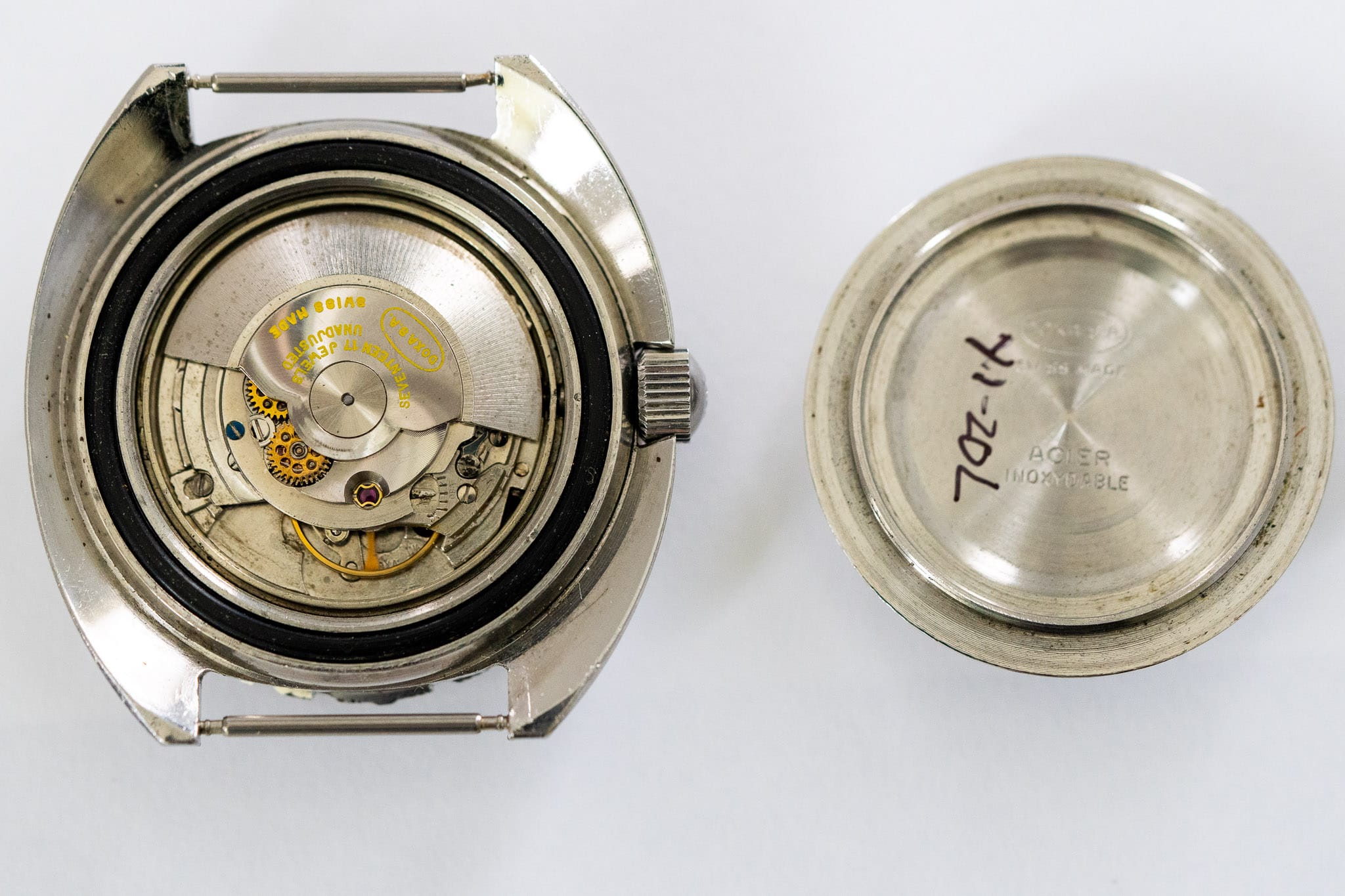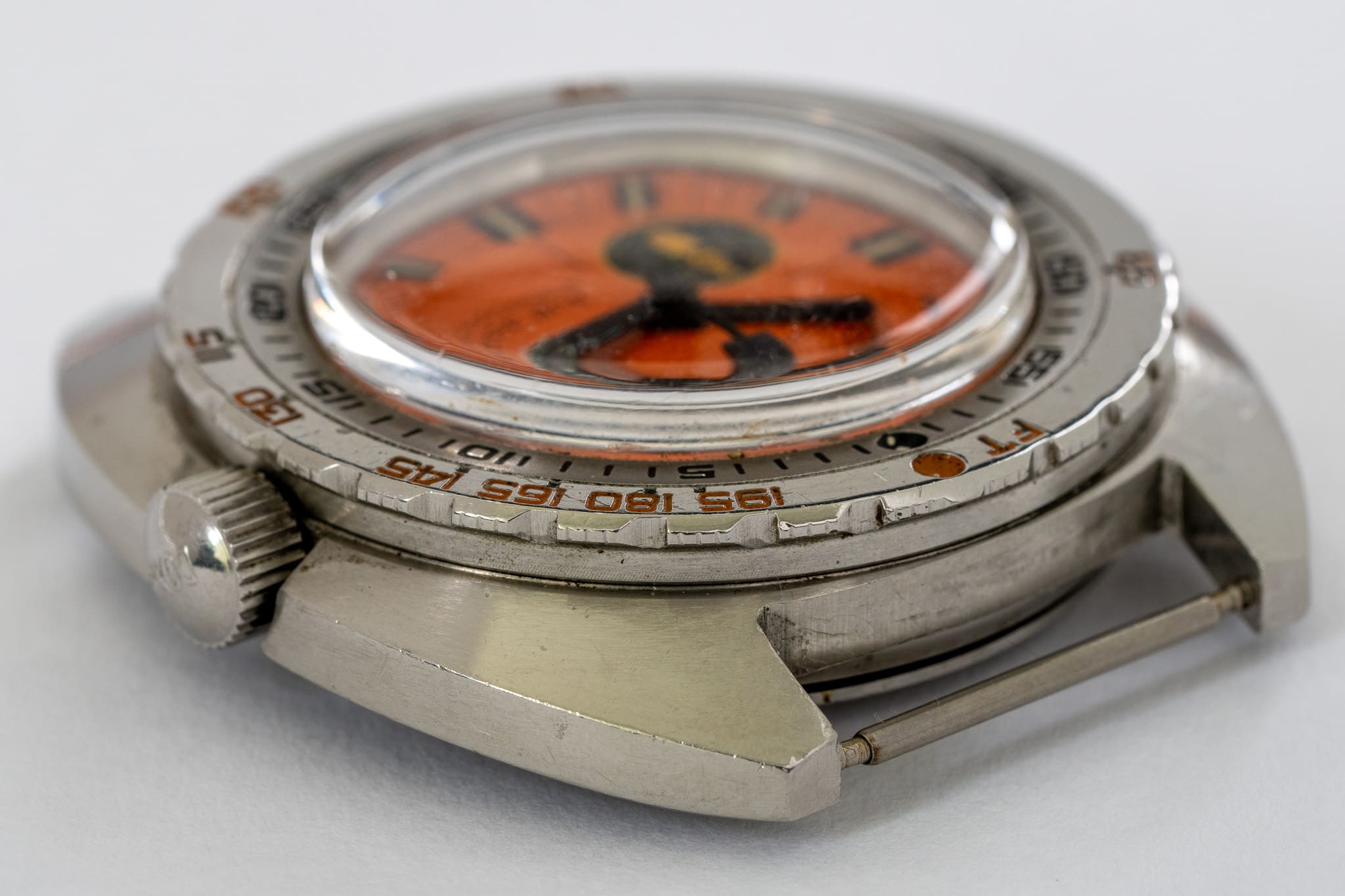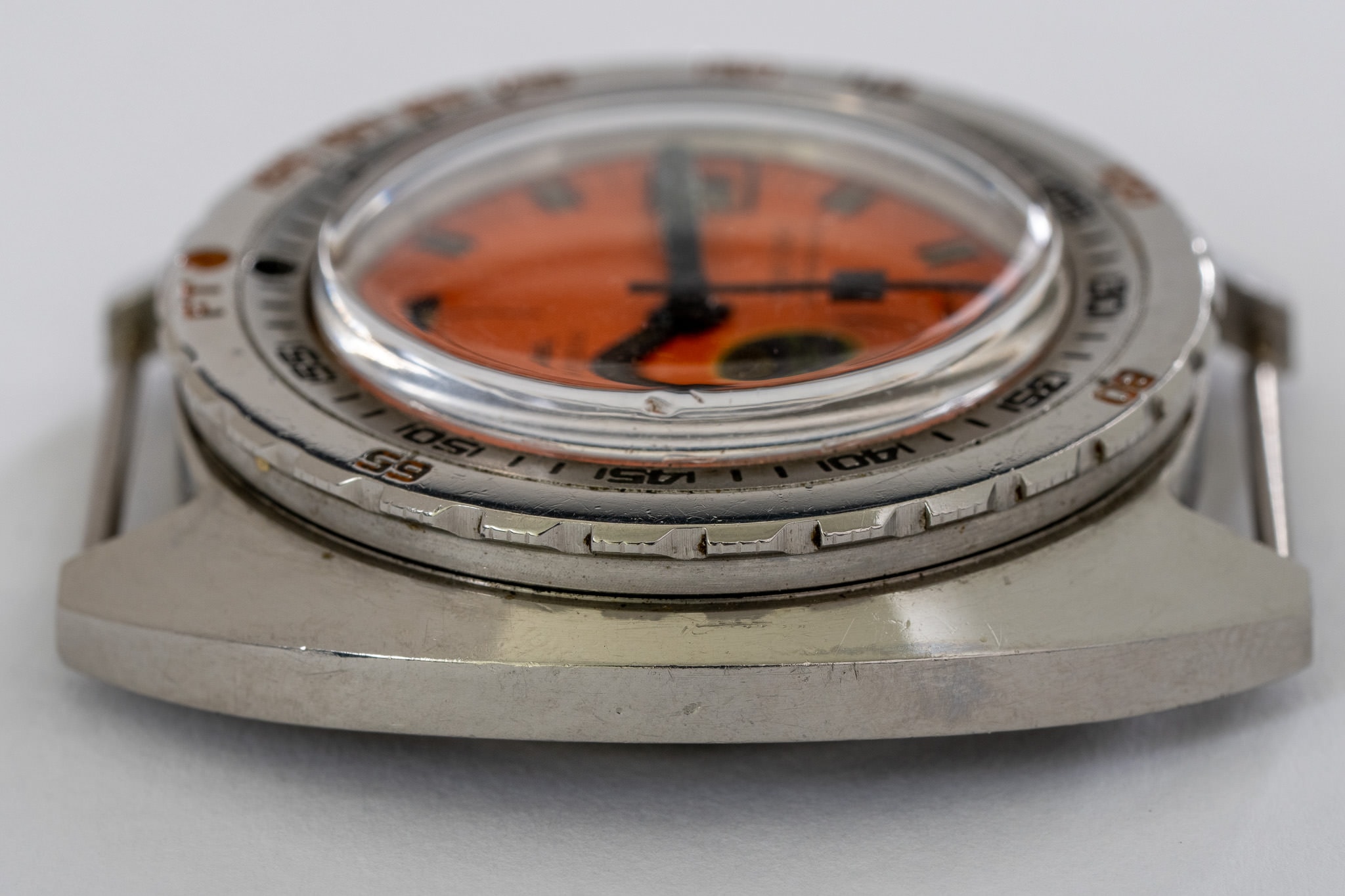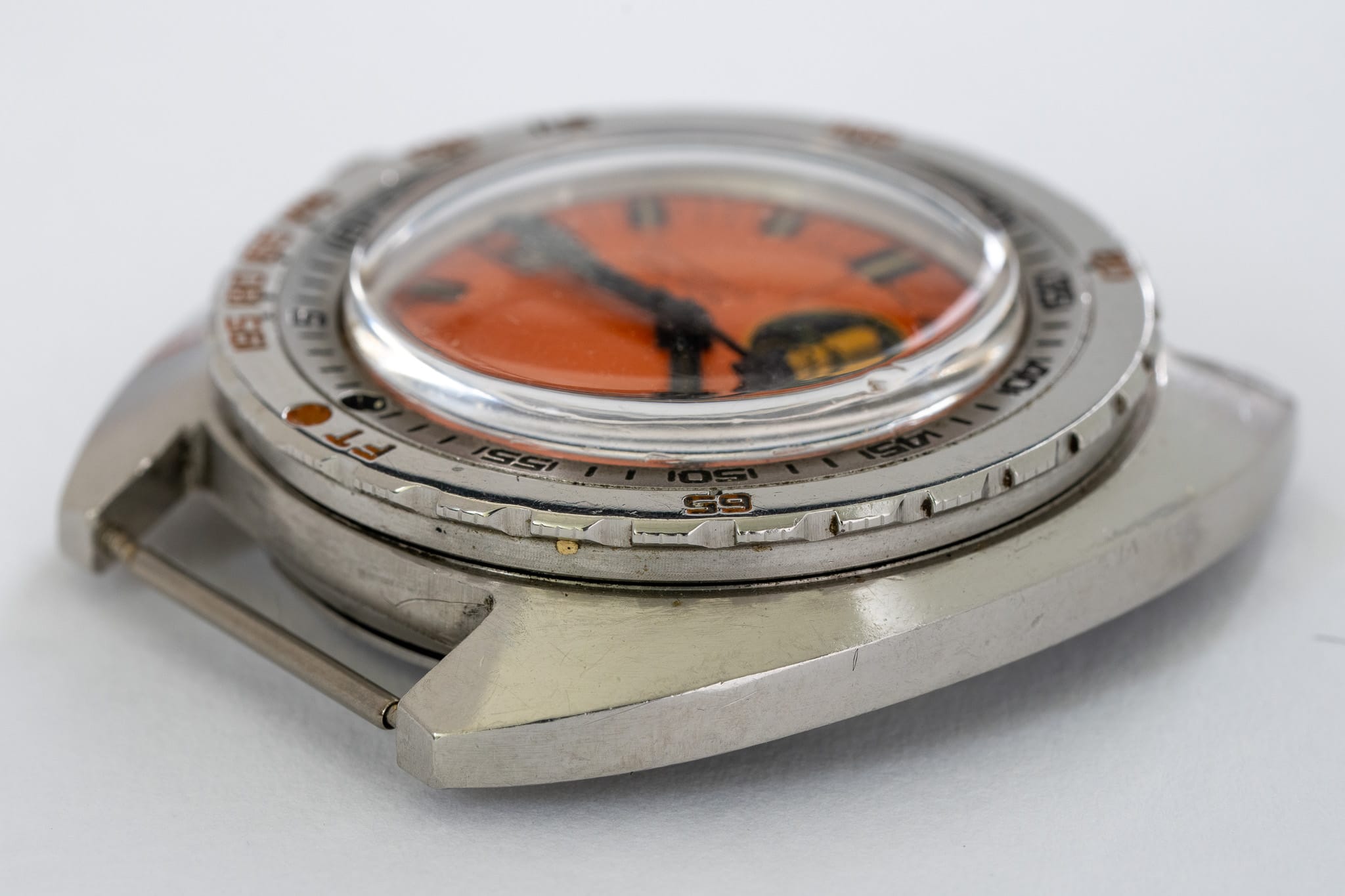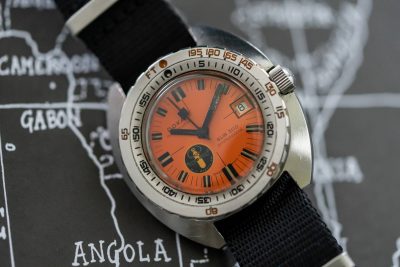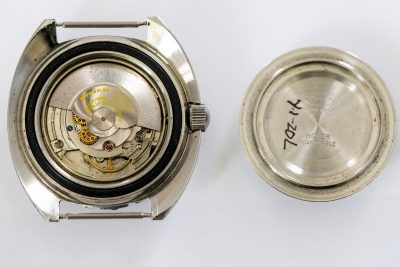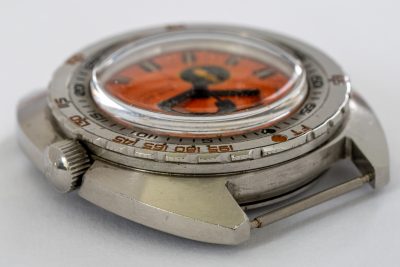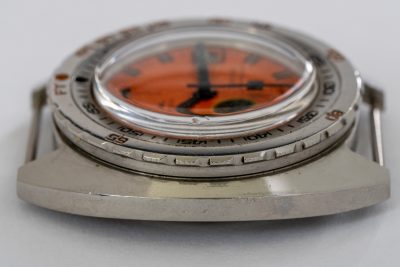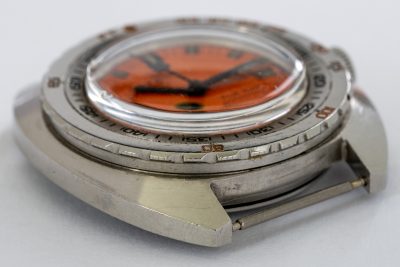No products in the basket.
Doxa SUB 300 “Black Lung” Prototype
£7000
|
DOXA “Black Lung” Sub 300 Prototype! Is it a Unicorn? or Hen’s teeth? or Rocking Horse Poo? No, it’s a DOXA “Black Lung” Sub-300 Prototype! Before we talk about this particular “Black Lung”, here’s some background history… When you think about diving, and diving watches in particular; the Doxa Sub 300 must be seen as one of the most influential diving or “tool” watches of all time, but nobody has really heard of it. Why? Everybody knows the significance of the Blancpain “Fifty Fathoms”, the first-ever diver’s watch. Rolex Watches, Submariner or Sea-Dweller are the epitomai of what everybody wants from a dive watch. And let’s not forget Seiko’s 6105-8110 or “Captain Willard”, as it is affectionately known and easier to remember by collectors; this being Japan’s take on an affordable (to American G.I.’s anyway!) dive watch. A more avant-garde and perhaps, with more of a Professional bent to its purpose, the Omega ProPlof doesn’t shy away from the spotlight either. When talking about Dive Watches, all are easy calls certainly, … but the Doxa Sub 300 stands tall and proud, bang in the centre of these iconic dive watches, both in terms of timeline and design. So, why no major fanfare over DOXA watches? Well, DOXA had little or no marketing budget to speak of, so their approach to their clients was different. Rather than sell their watches through Jewellers, they sold their watches through the emerging SCUBA Diving shops around the world, thus, uniquely connecting to its customers at the point of use. If you were a professional or recreational diver, you knew about DOXA; if you weren’t a diver, you didn’t. It’s as simple as that. Doxa aimed to make a watch that would, from the very beginning, answer the problems divers were facing at the time. Rather than copying others, DOXA decided to start with a clean sheet, so they put together a research team that included several professional divers and experienced watchmakers. The goal for the research group was clear: develop the first affordable sports diver watch for leisure and professional divers. One that is purpose-built is reliable, supremely comfortable, and most important of all, is highly legible. And the first generation of the DOXA Sub 300, introduced in 1967, was their answer, which established innovations we now take for granted. The Sub 300 was the first dive watch to offer an orange dial, for high visibility underwater. The first to have a unidirectional bezel (A DOXA Patented development), specially marked with the US Navy’s double scale “No-Decompression” dive timing marks, engraved around its outer edge. It had a saw-tooth or serrated edge to allow easy manipulation with wet or gloved hands too. It was the first dive watch to introduce a spring-loaded and expanding clasp, so it would fit over a wet suit easily. And its use of an oversized luminous minute hand, to allow easy timekeeping, “at-a-glance”, whilst underwater. That, and the fact this watch used more “Lume” on its dial than anything that went before, all aided LEGIBILITY! All are housed in a large tonneau-shaped case, which protects the movement and crown from knocks; covered by a high domed acrylic crystal. As I say, just a few of its advances! DOXA marketed the Sub 300, not as a watch, but as an essential and robust piece of diving equipment. This revolutionary new watch soon came to the attention of a chap called Jacques Cousteau… you might have heard of him? No… Well, Jacques-Yves Cousteau, AC was a French naval officer, explorer, conservationist, filmmaker, scientist, photographer, author and researcher who studied the sea and all forms of life in water. He pioneered marine conservation and was a member of the Académie Française. However, he is better known as the grandfather of SCUBA diving, as he co-developed the Aqua-Lung in 1943; another diving essential which allowed millions of people to experience the underwater world for the first time. Jacques owned a company called US Divers Company, which sold his revolutionary SCUBA equipment throughout the USA. The US Divers Company logo was a black and yellow Aqua-Lung. Jacques saw the need for and wanted to offer his clients a dive watch that wouldn’t fail them, and DOXA’s Sub 300 was the perfect match. A collaboration was formed, and a small batch of prototypes was made. In the book on DOXAs by the DOXA expert, Dr Peter McClean Millar, it is suggested that no more than 10 units were produced. Others have suggested, maybe 20. The truth of the matter is, only 4 have been found so far (and ours is one of those!). No modification to the watch was necessary, it only differed from the norm by the addition of the yellow and black Aqua Lung logo printed in the lower left quartile of the orange dial. This specific logo has earned the watch the nickname “Black Lung” by DOXA collectors. The only thing was, by adding such a heavy black logo, the legibility of the watch became almost non-existent, with the black hands “disappearing” as they travelled over the logo. Not the best situation when diving! The problem was easily solved, by changing the logo to an outline image of the Aqua Lung logo, thus minimising the effect it had on legibility. These “out-line” Aqua Lung logoed watches were retailed under the DOXA “Professional” nomenclature with an orange dial. Two other dial colours made up the range, a silver dial, named “Searambler” and a black dialled version, named “Sharkhunter”. The SUB 300 is a rare watch, only being retailed for just over a year. It could almost be classified as a “work-in-progress” or a “soft launch” in modern-day parlance. They were superseded by the SUB 300T very quickly. It is thought that less than one hundred SUB 300s exist today; so, these are extremely rare and highly sought-after, and is very collectable, in their own right. So, you can understand, therefore, why the Black Lung, with four known examples only, is such a Grail Watch for collectors. It is a very special watch. Wow, that took a little longer than expected! Anyway, onto this DOXA Black Lung Prototype, one of the four that have been identified, to date. We have already mentioned the reason why this prototype watch has been nick-named the Black Lung. However, there are other significant, but subtle, differences between the prototypes and the final retail product which aren’t as obvious. With so few to compare, experts have very little data to work from, but the differences that have been identified are as follows… The outer ring of the bezel is marked differently, having a “feet” scale rather than meters. This was a watch for an American audience after all. The prototype bezel has “FT” to the left of the noon pip, this was dropped from the retail item. There are no reference or serial numbers stamped into the case back, just the yacht under full spinnaker sail, to its centre. This is consistent with other DOXA prototypes. And this is where it gets interesting… Our DOXA Black Lung has a couple of other differences, which might be unique to this individual watch. Firstly, both hands are thinner than other Sub 300s we have seen, and the minute hands luminous infill is longer, progressing almost to its end. Was this an attempt to combat the illegibility of the hand, as it passed over the very dark logo? A solution rejected in favour of the standard fat hands perhaps. Or are they replacement hands? If they are, then they are contemporaneous to the watch as they display a dark wabi bloom and crystallisation of the lume associated with great age and a little bit of moisture entering the watch over time. We like to believe they are original to the watch, but to be on the safe side, we will say replaced. A set of NOS hands, which were provided by the U.S. DOXA collector when he sold the watch to a UK collector, will be supplied with the watch when sold again. Although not a perfect match, the new owner can decide which they prefer. The second unique(?) feature, is the date wheel, seen through the aperture at 3 o’clock. This Black Lung sports a red and black printed date wheel. The even numbers are printed in black, the odd numbers in red. Do any of the other prototypes, that are known about, have this feature? It would be great to find out. Funnily enough, the most obvious failing in legibility, the solid black second hand remained and wasn’t replaced until the SUB 300T was introduced, whereby a square lollipop, luminous insert was added. I suppose you could say that was fairly quick though when you consider only one hundred or so, SUB 300s were made in the first place! Unfortunately, our watch has lost its Beads of Rice bracelet, so it is presented on a ChronoDuo black Premium NATO Strap and comes with a complimentary period “Calypso” Depth Gauge, in its original plastic box. I wouldn’t trust it for diving but is a great bit of memorabilia! So, there you have it, one of four known “prototypes” to exist, with possible unique features of its own. No, it’s not a Unicorn, Hen’s Teeth or even Rocking Horse Poo, it’s better than that, it’s a major piece of dive watch history and you can’t get better than that! |
We work hard to ensure you are pleased with your purchase, both before and after the sale. Contact us to request any additional information.
Dispatch:
We aim to dispatch items within 1-2 days receipt of payment.
The delivery method can vary depending on the value of the watch. All watches are sent fully insured usually using UPS.
All watches sold without an original box will still be dispatched with a ChronoDuo presentation box.
Warranty
All timepieces purchased from us come with a guarantee of authenticity and our 12-month time-keeping warranty. Please note that accidental damage or damage to the item resulting from third-party repairs, improper handling, or liquid damage will void our warranty. We do not guarantee any of our watches to be waterproof.

